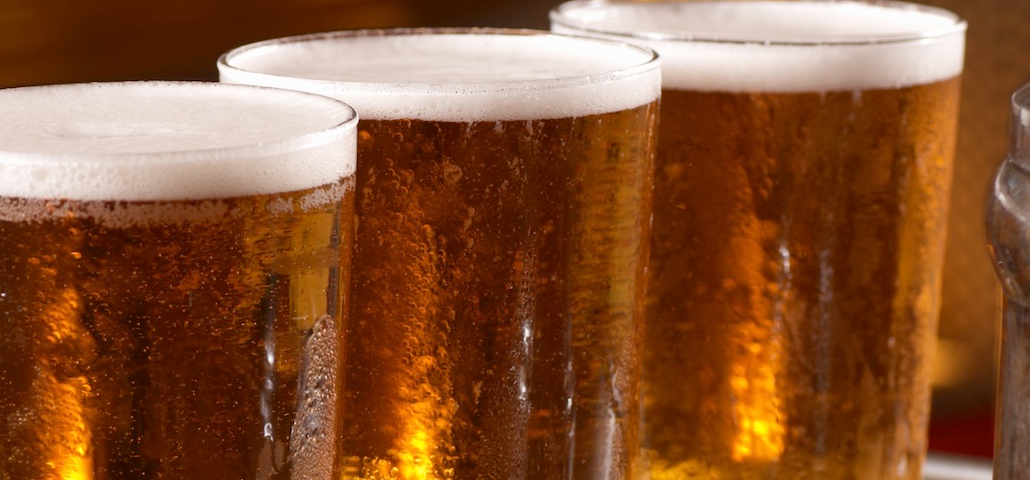Connect with execs from The New York Times, TIME, Dotdash Meredith and many more

Regardless of what country you’re in, life at ad agencies is fast-paced, fun, energetic and often frustrating. That said, there are some major differences between working at an agency in the U.K., and working across the pond in the U.S. We asked agency staffers that have worked in both markets what the biggest differences are, and here’s what they said:
Drinking culture is a big deal.
In the U.K., having three pints or half a bottle of wine at lunch isn’t frowned upon. In fact, it’s often encouraged. Come Friday lunchtime, it’s not uncommon to find legions of agency employees ditching their desks and opting instead to “work” from the pub for the afternoon. “It’s the democratic side of British agency culture, where the CEO and the creative director will share a drink with the trainees and the guy from the post room,” said Tom Morton, former TBWA and DDB London staffer, and current head of strategy at Goodby Silverstein & Partners NY. “In America, ‘a quick pint after work’ means exactly that,” said another senior agency exec. “In London, it means 10 pints, 4 Jack and Cokes, a curry and getting home sometime around 3:30 a.m.”
The perks are very different.
Oh, and did we mention drinking culture? In the U.S., relationships with media buyers are built with jeans and sunglasses, and trips to summer houses in the Hamptons. In the U.K., they’re built during long nights in the pub. “Media buyers don’t get tickets to games or to concerts; they get a nice lunch to prepare for the pub,” said one media agency staffer. “The answer is almost always the pub. ‘Do you have lunch and learns?’ The answer is ‘pub.'” Notice a pattern emerging here?
Using the “C word” in the office is entirely acceptable.
We’re not talking about “crumpets.” And, OK, maybe not entirely acceptable but more acceptable than in the U.S. at least. Just don’t direct it at your boss, and you’ll probably get away with it. “It’s true, there’s probably worse language within the walls of U.K. agencies,” one agency founder testified. “But that’s probably just a cultural thing anyway, us Brits are a foul-mouthed bunch.”
BS doesn’t get you very far.
The culture in British agencies is to be direct and to the point, agency execs report, which can be a good and a bad thing for both efficiency and morale. “If it’s shit, Brits don’t usually have a problem telling people it’s shit,” said one agency exec. “In the U.S., people tend to be a bit more diplomatic, which isn’t always helpful.”
Attitudes to work can be very different.
Sometimes even the simplest of tasks are greeted with very different responses. “Americans always say yes and never do it, while Brits always say no and begrudgingly do it badly,” said Jon Hamm, chief creative and innovation officer at Momentum Worldwide.
The scale is completely different.
The U.S. population currently stands at around 310 million, compared with just 63 million in the U.K. Unsurprisingly, that means budgets for U.K. campaigns are considerably smaller than for those in the U.S. “A 10 million pound media budget with a 500,000 pound fee is a big deal. A pitch for a 5 million spending brand will make the front page of Campaign. It’s a cottage industry compared to the U.S.,” said Morton. Audiences are also far less fragmented. TV is still the dominant channel by far, making digital little more than an afterthought for many major brands.
A vacation is exactly that.
Holiday is a real thing that you can actually take without being made to feel like a deserter, and still get hassled 24/7 by your boss.
Image via Simon Cocks
More in Marketing

In Graphic Detail: Inside the state of the creator economy industrial complex
The creator economy might have started out as an alternative to traditional media, but is becoming more and more like it as it professionalizes.

Shopify has quietly set boundaries for ‘buy-for-me’ AI bots on merchant sites
The change comes at a time when major retailers like Amazon and Walmart are leaning into agentic AI.

WTF is ‘Google Zero’?
The era of “Google Zero” — industry shorthand for a world where Google keeps users inside its own walls — is here.





